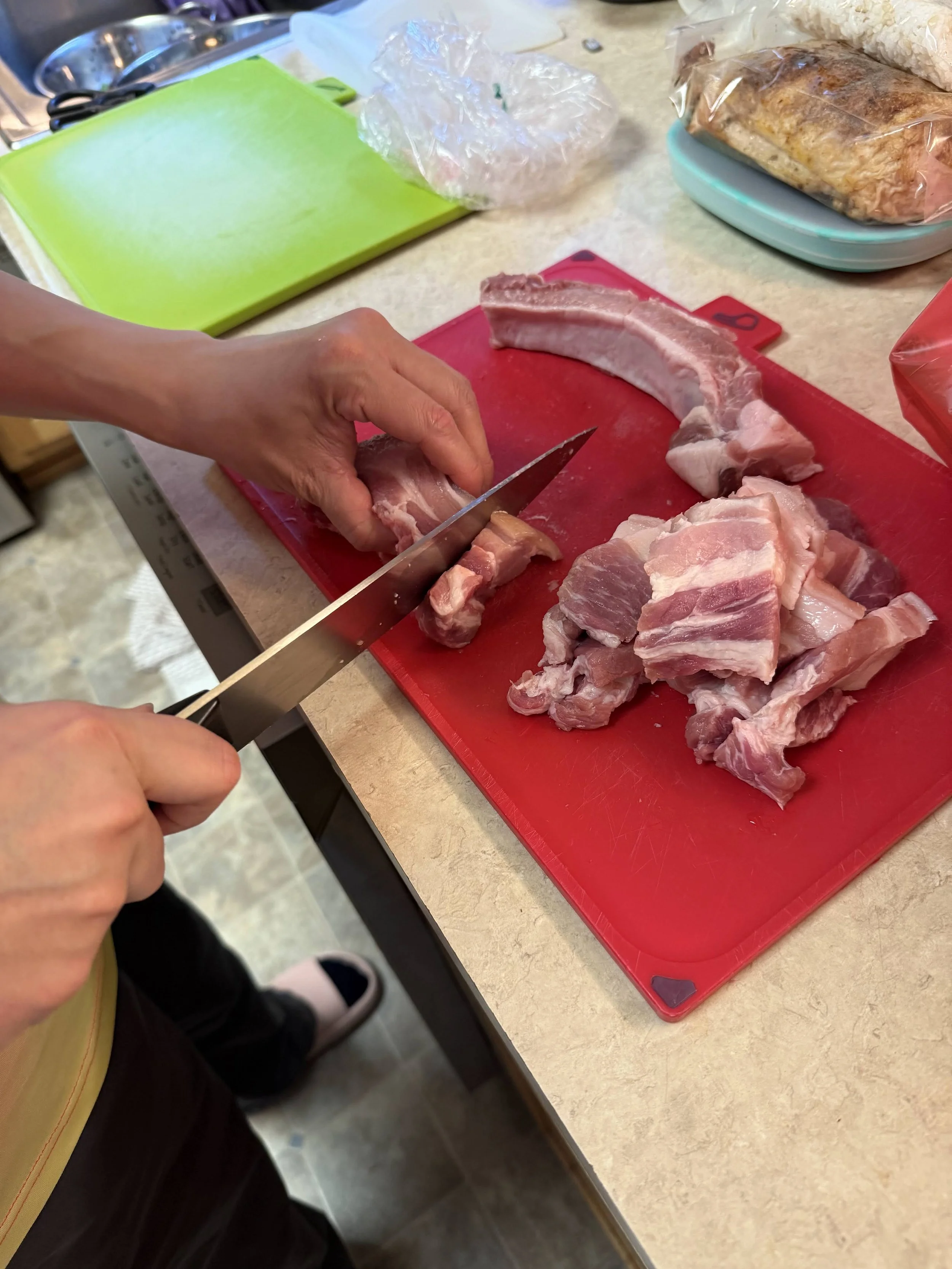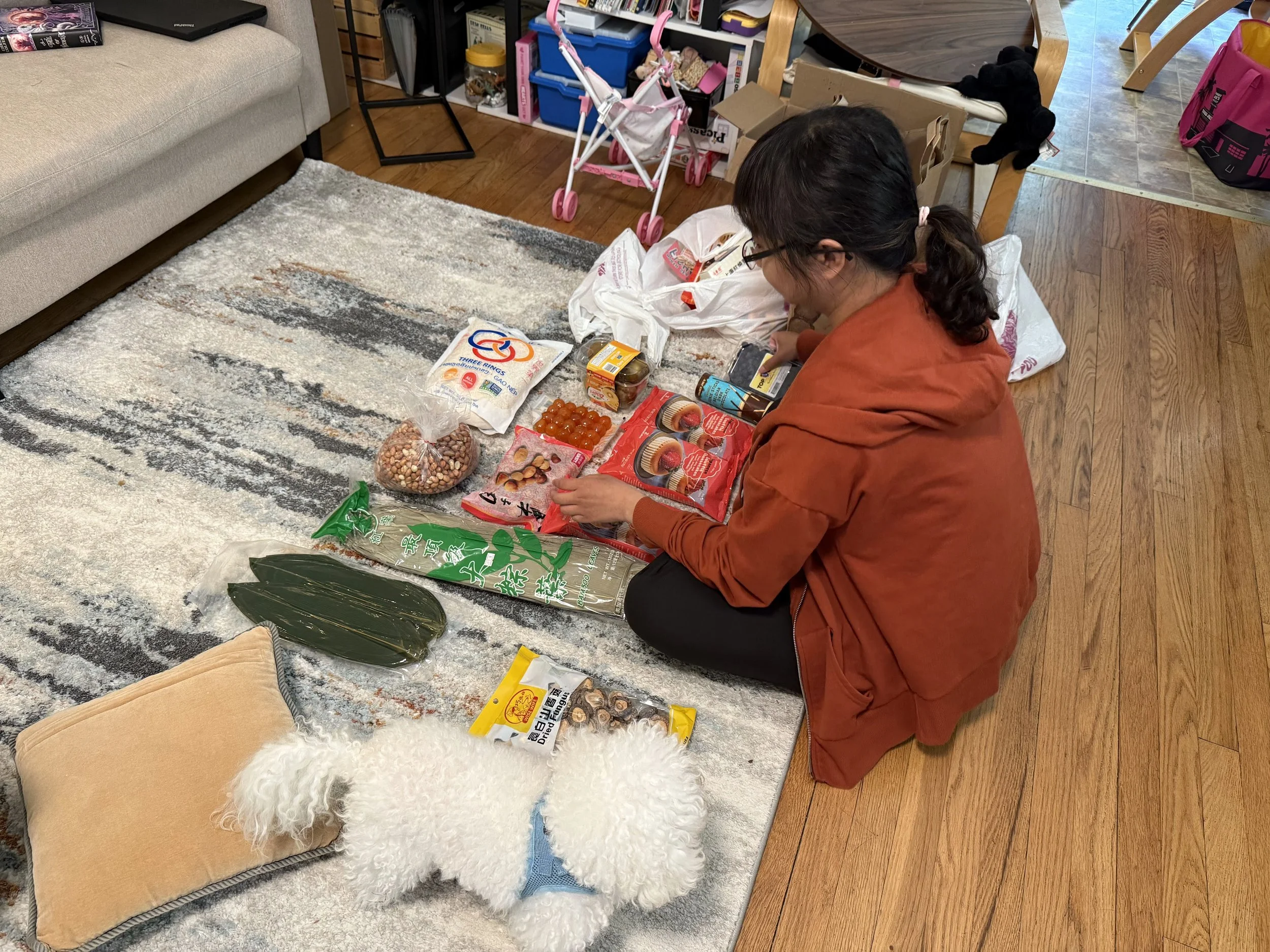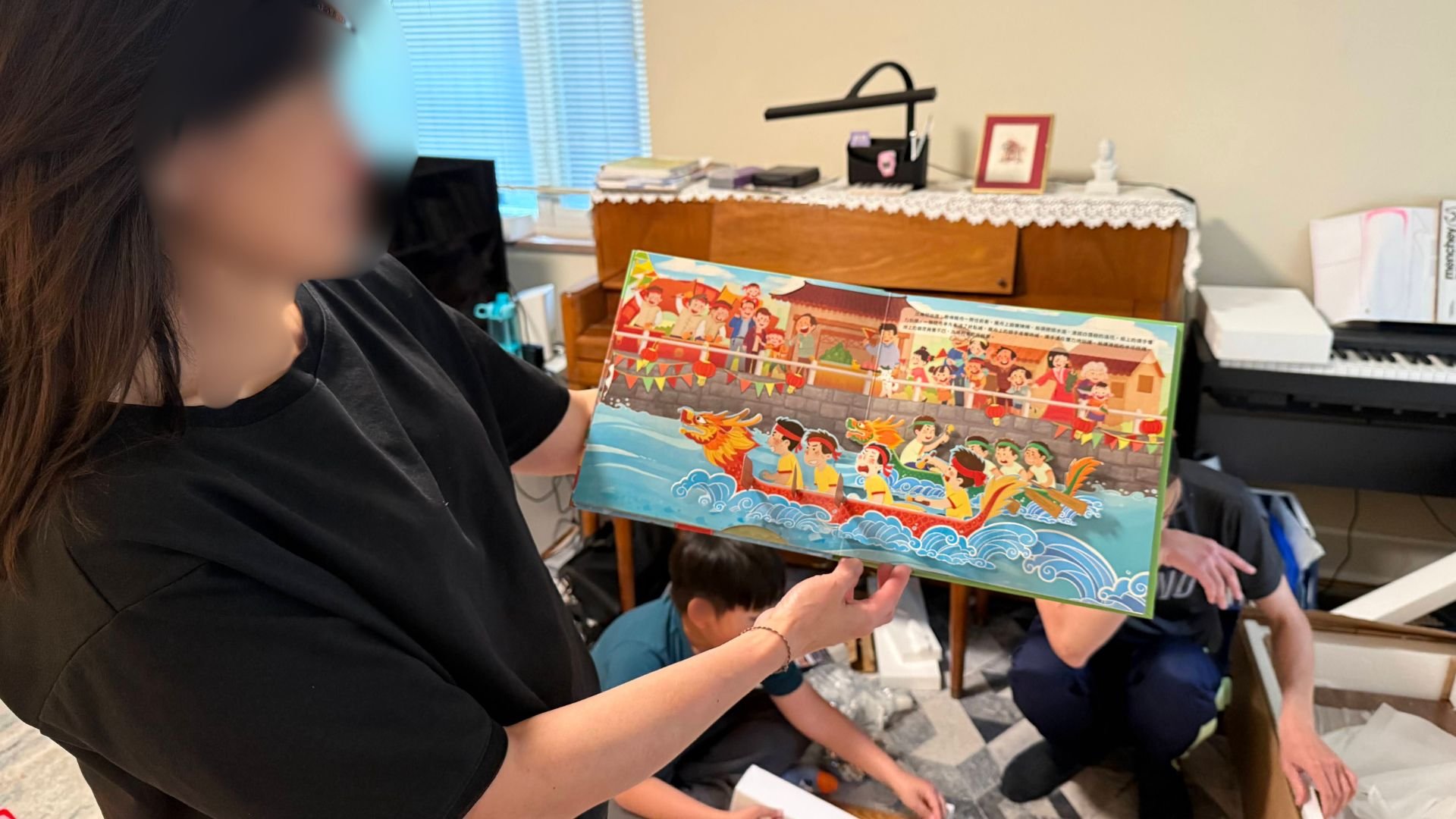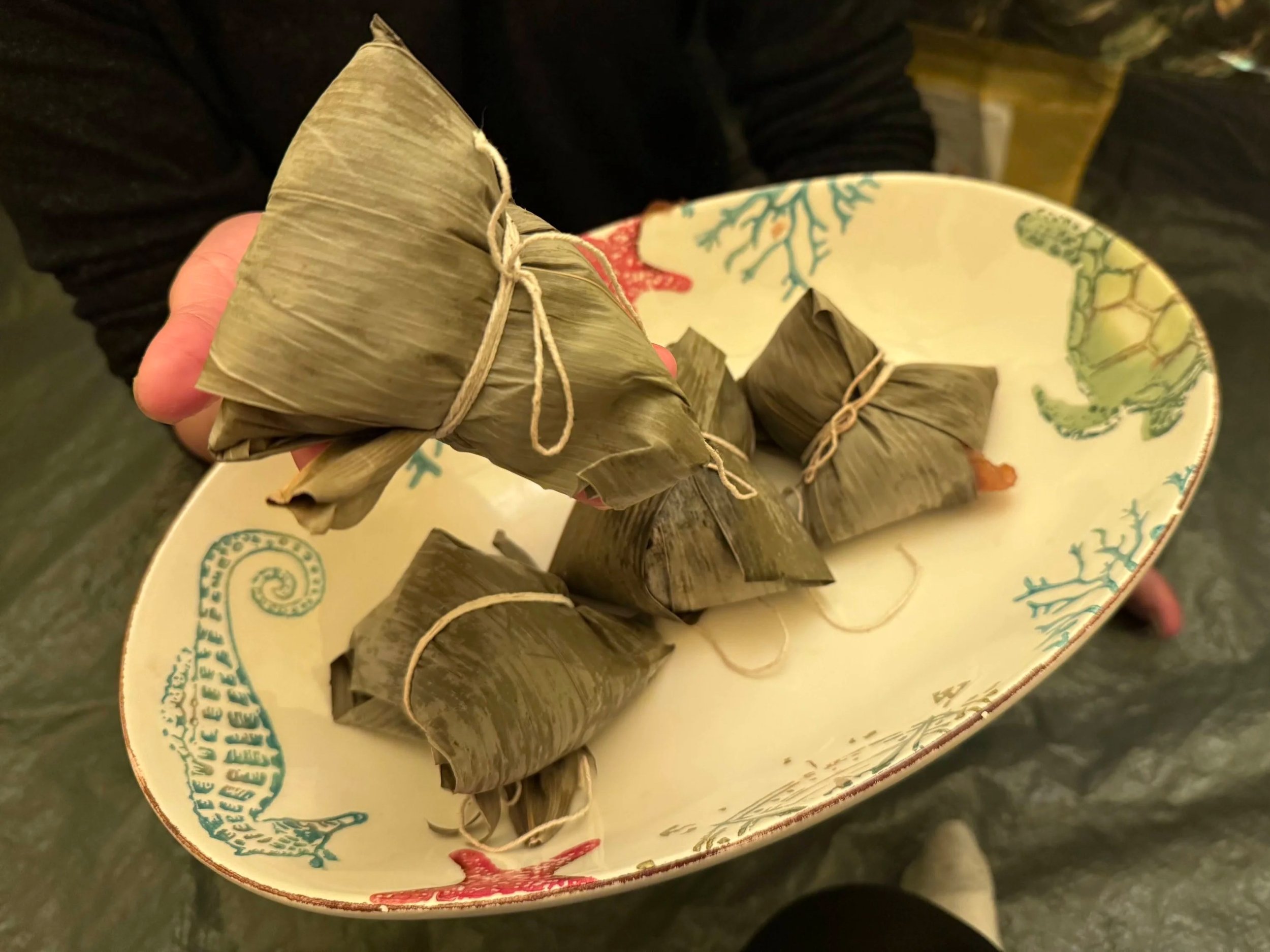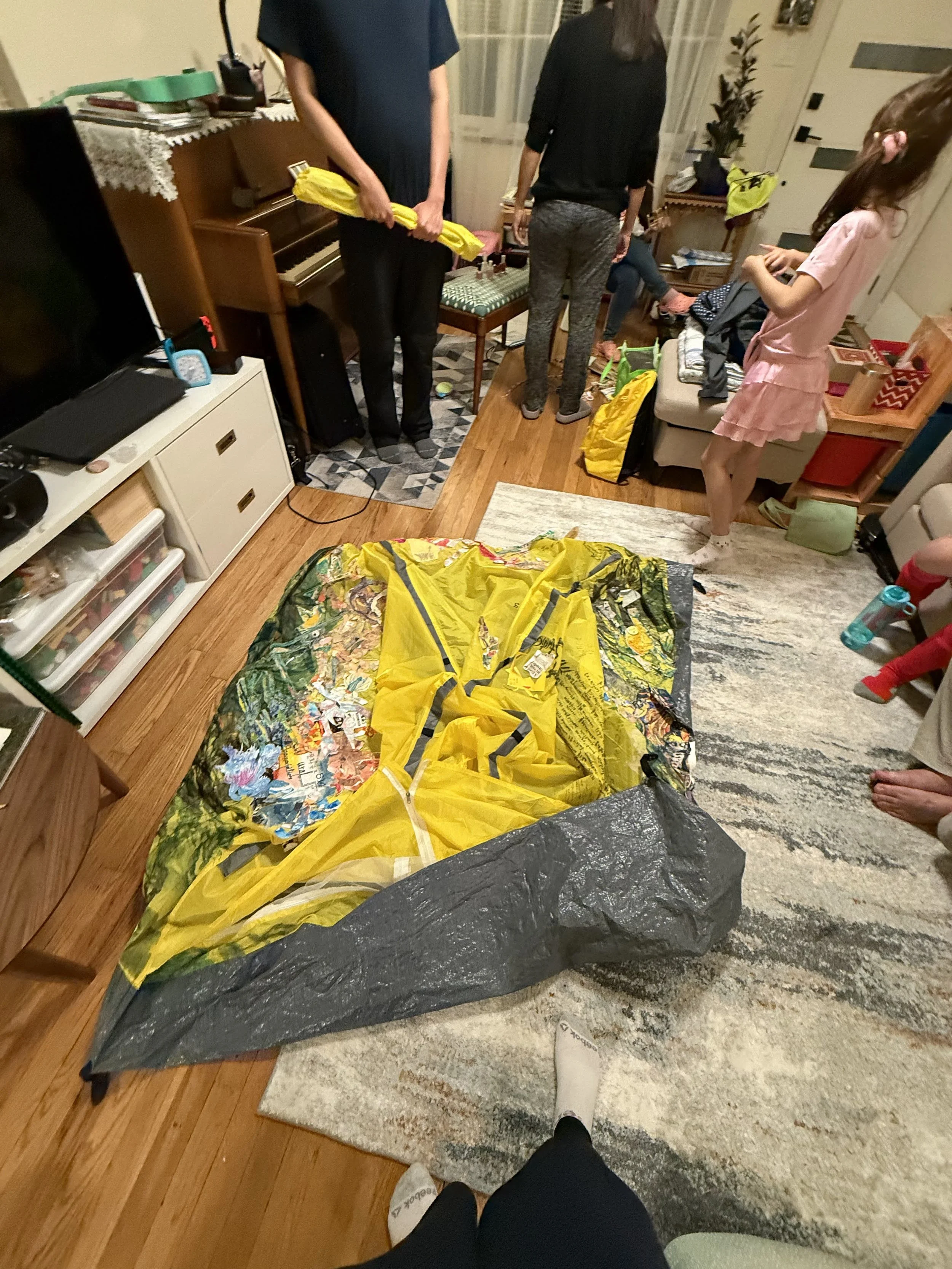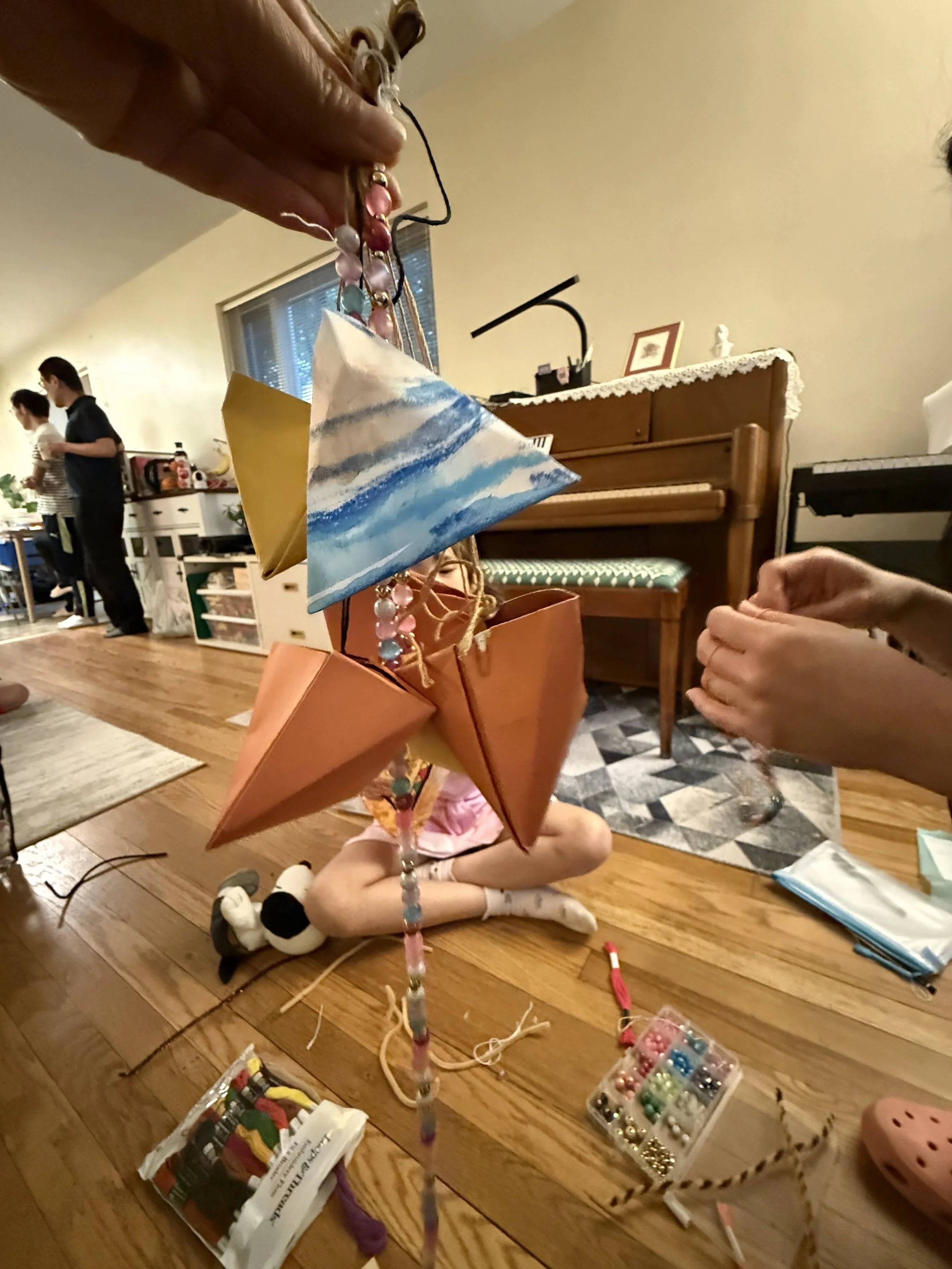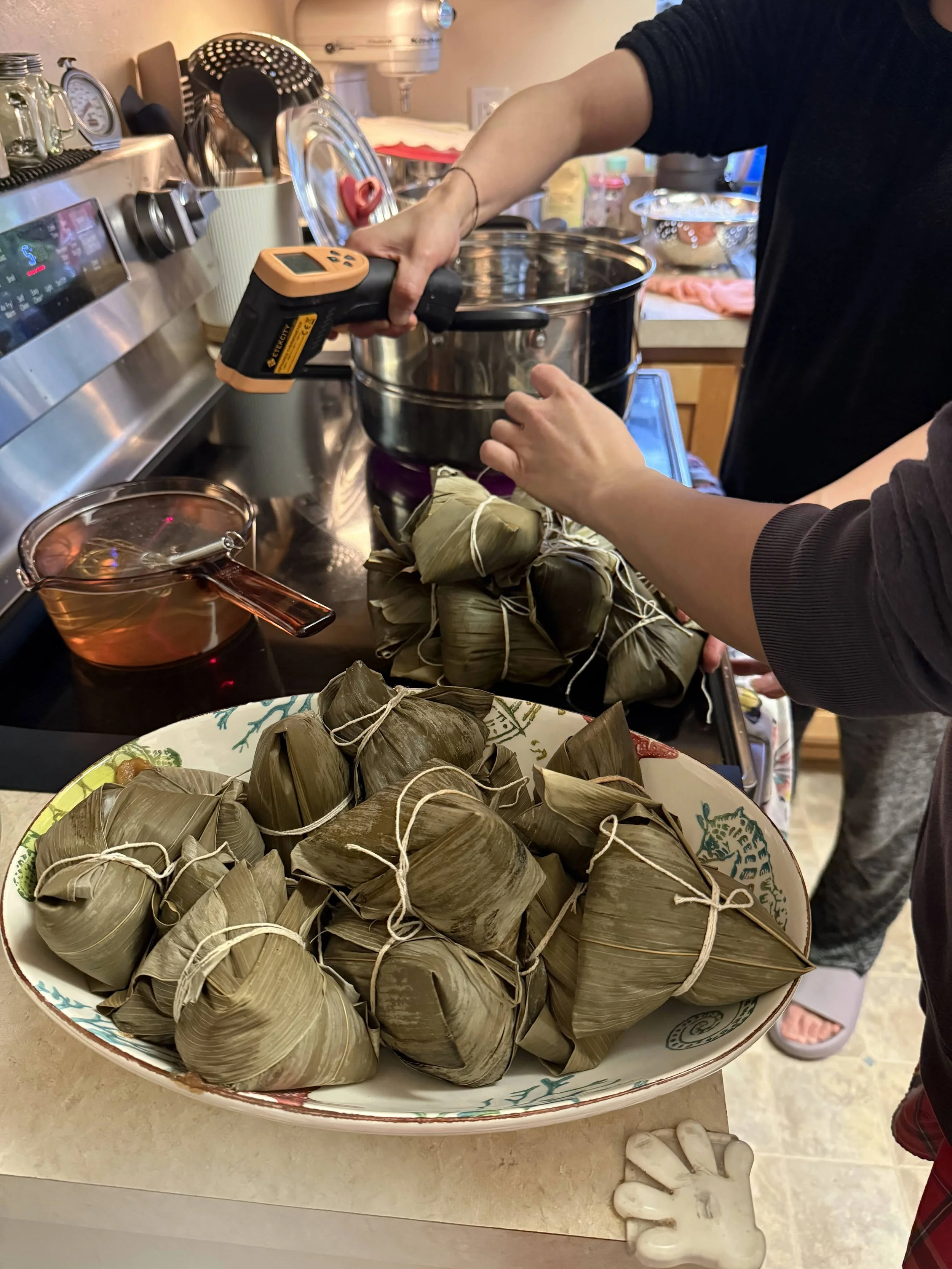
Zongzi Tent Wrapped in Leaves: (Un)folding Resistance Everyday
Resonating with my yellow tent, which confronts the label “little yellow,” Stacy shared her story as an East Asian immigrant conductor in the United States. Her professor, a tall White woman, demanded restraint, insisting she remain inside the podium’s frame. Yet Stacy’s smaller body called for more. By extending her arms beyond boundaries, she reclaimed visibility and transformed limitation into strength. Later, in her kitchen, she carried those gestures into cooking, wrapping zongzi as acts of memory, resilience, and community. For Stacy, both conducting music and preparing food became ways of claiming space of herself.
On a rainy afternoon, the yellow tent resonated with Stacy’s narrative of corporeal difference. An East Asian international student in a U.S. graduate program, Stacy was the first of her background to train in orchestra conducting under her professor, a tall White woman. Instruction emphasized restrained gestures and demanded her movements remain within the boundaries of the podium. This pedagogy assumed uniformity, overlooking Stacy’s shorter stature and embodied difference.
The constraint proved counterproductive. “The band members look at me. It’s like they can’t see my hand,” she recounted. Frustration mounted as her gestures failed to produce the desired sonic response. She asked herself, “Why can’t I get the music I want?”
In a pivotal moment of resistance, Stacy extended her arm higher than instructed and shifted her body beyond the podium’s limits. The orchestra finally responded. Her recalibrated gestures, larger and riskier, generated the musical resonance she sought. What her professor perceived as error, Stacy reframed as innovation.
“It’s because I am small,” she explained. “If I jump up, if I really dare, the tension becomes visible. That contrast is good in art, especially in music.” What might be dismissed as limitation—the “little girl” body—became an aesthetic advantage. Her smaller stature made dramatic gestures more striking, generating visible contrasts that intensified the emotional tension of the performance.
Her professor disapproved: “She thought I didn’t remember her technique.” But for Stacy, the conflict revealed a deeper issue. The prescriptive method failed to consider racialized corporeality, accented English, and the embodied negotiations of a shorter Asian woman. “We have different physical heights, but she did not acknowledge that and just kept trying to make me follow her method.”
Stacy’s story reframed conducting as a practice that demands sensitivity to body, culture, and difference—not rigid uniformity. Extending beyond the podium became both literal and symbolic resistance against White normative standards in higher education.
After completing her PhD, Stacy built a family in the United States with her White American spouse and daughter. Yet she continued to encounter marginalization: accented English dismissed as deficiency, exploitative teaching labor, and isolation from Taiwanese communities. Despite these challenges, her spirit of resistance persisted. She extended her conducting gestures into daily life through food. “I make Taiwanese food to connect with people,” she said. “The way I cook feels like how I conduct. I choose the ingredients my way, adjust the recipe as I go, and try to bring everything together, just like getting the orchestra to sound right.”
Cooking became her everyday podium. The kitchen, she explained, was the only space in the house she felt was hers. When I introduced the yellow tent, she connected it with zongzi—triangular glutinous rice dumplings wrapped in bamboo leaves, prepared during the Dragon Boat Festival. “Tent is like a space that wraps around our memory and body, a triangular form, right? It reminds me of zongzi.”
Together, we prepared a zongzi tent gathering. Stacy organized friends, ingredients, and tools. She visited multiple markets to find bamboo leaves, pork belly, rice, and mushrooms, determined to preserve authenticity. Folding and tying the leaves required skill: “You have to tie it like you mean it, or it will fall apart in the pot.” Over twenty Zongzi (rice dumplings), each slightly different, lay ready to steam.
Her daughter watched eagerly, and friends’ children helped knot hemp strings. Soon the kitchen filled with the aroma of simmering zongzi. The triangular bundles became more than food. They became a tent of memory, community, and intergenerational care.
Later, inside the yellow tent, Stacy reflected: “Food is not just food. As immigrants, we often miss home. But when we share authentic food, dialogues emerge.” Hosting the zongzi gathering allowed her daughter to engage with Taiwanese traditions while friends shared laughter in Mandarin and English.
For Stacy, wrapping zongzi connected to conducting. Both required embodied gestures, precision, and improvisation. Both offered ways to reclaim presence and create resonance. The triangular dumpling mirrored the triangular tent, each enclosing memory, culture, and resilience.
Yet the challenges remained. At her daughter’s school, classmates mocked the zongzi: “Eating rice wrapped in leaves is barbaric.” Stacy comforted her daughter, but the incident revealed how cultural continuity often clashes with dominant norms.
Stacy’s story unfolded as both conducting and cooking, both podium and kitchen. The yellow tent became a site where corporeal resistance and culinary care converged. From extending her arm beyond the podium to tying bamboo leaves around rice, her gestures asserted visibility, nurtured community, and sustained transnational identity.
“Tent is like a space that wraps around our memory and body, a triangular form, right? It reminds me of zongzi.”
“Food is not just food. As immigrants, we often miss home. But when we share authentic food, dialogues emerge.”




